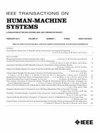采用两阶段细化训练策略的轻量级全身人体姿态估计
IF 3.5
3区 计算机科学
Q2 COMPUTER SCIENCE, ARTIFICIAL INTELLIGENCE
引用次数: 0
摘要
人体全身姿态估计是一项具有挑战性的任务,因为模型需要学习的关键点要多于纯身体的情况。由于轻量级网络的学习能力有限,如何在保证精度的同时满足实时性的需求也是全身姿态估计的一个难点。为了在很大程度上解决上述问题,我们提出了一种具有优化训练策略的轻量级全身姿态估计方法。该模型的设计基于自下而上的架构,先是一个基础网络,然后是一个细化网络。我们提出了一个两阶段训练过程,在第一阶段学习粗略特征,然后在第二阶段提高估计精度。在第二阶段,我们提出了一个在线数据增强程序,以提高细化性能。我们还引入了一个单独的学习细化结构,可对身体、脚部和手部进行独立细化。实验结果表明,在全身姿态估计任务中,我们的方法与其他最先进的轻量级方法相比,平均精度提高了 8%-10%,模型参数节省了近四分之一(25%)。本文章由计算机程序翻译,如有差异,请以英文原文为准。
Lightweight Whole-Body Human Pose Estimation With Two-Stage Refinement Training Strategy
Human whole-body pose estimation is a challenging task since the model needs to learn more keypoints than the body-only case. To meet the needs of real-time performance while maintaining accuracy is also a hard issue in whole-body pose estimation due to the learning capability of lightweight networks. In order to solve the above problems to a large extent, we propose a light whole-body pose estimation method with an optimized training strategy. The model is designed based on bottom-up architecture as a base network followed by a refinement network. We propose a two-stage training process, which learns rough features in the first stage and then improves estimation precision in the second stage. An online data augmentation procedure is proposed in the second stage to improve refinement performance. We also introduce a separate learning refinement structure that fine-tunes for body, foot, and hand part independently. Experimental results show that our method improves over 8%–10% average precision compared with other lightweight state-of-the-art approaches in the whole-body pose estimation task, with nearly a quarter (25%) size of model parameters saved.
求助全文
通过发布文献求助,成功后即可免费获取论文全文。
去求助
来源期刊

IEEE Transactions on Human-Machine Systems
COMPUTER SCIENCE, ARTIFICIAL INTELLIGENCE-COMPUTER SCIENCE, CYBERNETICS
CiteScore
7.10
自引率
11.10%
发文量
136
期刊介绍:
The scope of the IEEE Transactions on Human-Machine Systems includes the fields of human machine systems. It covers human systems and human organizational interactions including cognitive ergonomics, system test and evaluation, and human information processing concerns in systems and organizations.
 求助内容:
求助内容: 应助结果提醒方式:
应助结果提醒方式:


